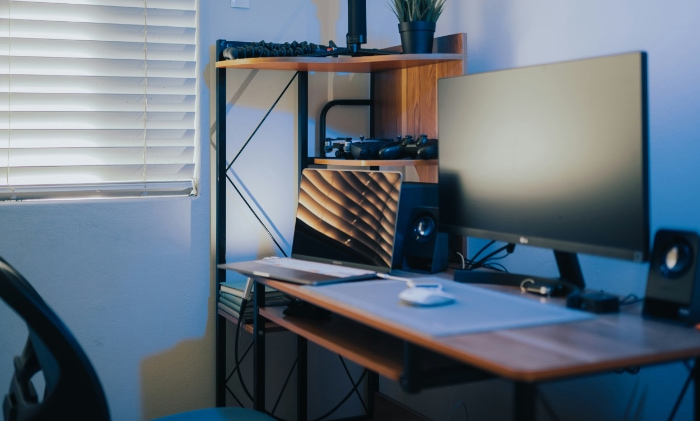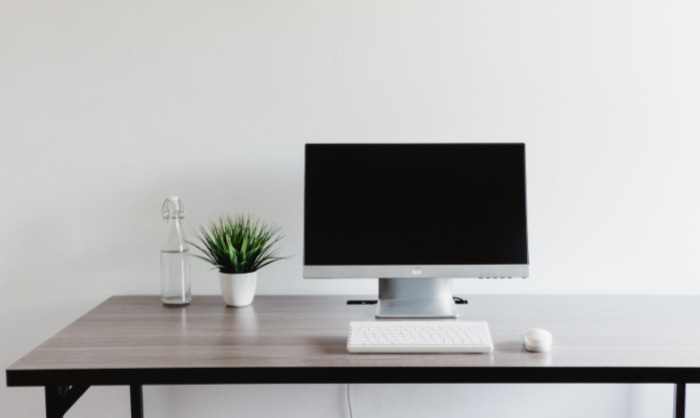Monitor Keeps Going Black? Quick Troubleshoot

Are you dealing with the frustration of a monitor that keeps going black, throwing a wrench into your productivity or relaxation time? You’re not alone. This common and irritating issue can have you staring at a lifeless screen, wondering what went wrong.
But don’t let the darkness win just yet! Whether you’re a gaming enthusiast facing interruptions in your virtual adventures, a professional grappling with disrupted workflows, or simply trying to enjoy your favorite movie, this guide is your beacon of hope.
Initial Checks and Basic Troubleshooting
When your monitor flickers to black, the solution might be simpler than you think. This phase is all about covering the basics—ensuring everything is plugged in right and functioning as it should.
Cable Connections
It all starts with the cables. These lifelines transmit signals and power, and if something’s amiss here, your screen could certainly go dark.
Ensure that your HDMI, DVI, or VGA cables are not just connected, but securely fastened at both ends—your computer and your monitor. Loose connections are common culprits.
Give them a gentle push to make sure they’re snug. If your cables are visibly damaged or bent, they might need replacing. Also, consider trying a different cable to rule out the possibility of a faulty one.
Power Supply
Power issues can often lead to a monitor going black. Start by checking the power connection to your monitor.
Is the power cable securely plugged into the monitor and the wall outlet or power strip? Sometimes the solution is as simple as re-plugging the cable into the outlet. If your power strip or surge protector has multiple devices connected, try plugging the monitor directly into the wall to ensure it’s receiving sufficient power.
Keep an eye out for signs of a failing power supply, such as flickering lights or the monitor turning on and then immediately off. These symptoms can indicate power issues that may require a professional’s touch.
Hardware Considerations
After ensuring your basic connections and power supply aren’t the culprits, it’s time to scrutinize the hardware components a bit more closely. Monitors and computers are intricate devices, and a minor hiccup in the hardware can lead to the black screen issue.
Monitor and Computer Ports
The ports on your computer and monitor act as gateways for transferring data and display signals. A malfunctioning port can disrupt this flow, leaving you with a blank screen.
Try plugging your cable into a different port on your computer, if available. Similarly, if your monitor has multiple input ports, try switching to an alternative port.
This simple step can often bypass a faulty port and restore your display. Remember, it’s not just about switching ports; inspect them for any signs of damage or debris that could interfere with the connection.
External Devices
External devices like USBs, hard drives, or even your mouse and keyboard can sometimes conflict with your system, leading to unexpected issues like a black screen. Start by disconnecting all peripheral devices from your computer.
Once disconnected, restart your computer and check if the monitor is still going black. If your screen comes to life after removing these devices, reconnect them one by one.
This method helps pinpoint the exact device causing the issue. It’s a simple but effective way to troubleshoot hardware conflicts without needing expert knowledge.
Display Settings and Drivers

Tackling monitor blackouts isn’t just about the physical setup; the software that controls your display plays a crucial role too. Incorrect settings or outdated drivers can often lead to your screen going dark.
Graphics Driver Update
Drivers are the software that allows your operating system to communicate with your hardware, like your graphics card. Outdated or corrupted graphics drivers are common culprits behind display issues.
To ensure this isn’t the root of your problem, visit the website of your graphics card manufacturer (like NVIDIA, AMD, or Intel) and download the latest driver for your model. Installing the latest drivers can resolve compatibility issues and often brings your monitor back from the darkness.
Resolution and Refresh Rate
Your computer’s resolution and refresh rate settings need to be compatible with your monitor’s capabilities. If the settings are too high or not supported, your screen might go black as a safety mechanism.
Access your display settings by right-clicking on the desktop and selecting ‘Display settings’ or similar. From there, ensure that the resolution matches your monitor’s recommended settings.
Similarly, adjust the refresh rate from the advanced display settings to a rate that your monitor supports. These tweaks can often restore your display without further interventions.
Software and System Interference
Sometimes, the issue isn’t just about the hardware or the immediate software like drivers; it can be deeper within the system settings or due to software conflicts. These can inadvertently cause your monitor to go black.
Power Settings
Your computer’s power settings are designed to save energy, but sometimes they can be a little too aggressive, turning off your monitor when you don’t want them to. Dive into your system’s power settings to ensure it’s not set to turn off the display after too short a period.
For Windows, you can find these settings in the Control Panel under ‘Power Options.’ For Mac users, look in the ‘Energy Saver’ section of System Preferences.
Adjust these settings to a balance that saves energy without interrupting your work or entertainment.
Conflicting Software
Software running in the background can sometimes conflict with other programs or system functions, leading to a range of issues, including a black screen. Performing a clean boot can help you determine if a background application is the culprit.
This process starts your computer with a minimal set of drivers and startup programs. If your monitor works fine after a clean boot, you can deduce that a background application is to blame.
Gradually re-enable applications and services until you identify the problematic software. Once identified, you can update, reconfigure, or uninstall the software to resolve the issue.
Advanced Troubleshooting
When the standard fixes don’t clear the shadows off your screen, it’s time to dive into advanced troubleshooting. These steps are for those who’ve tried the basics and are comfortable taking a deeper look into their system’s and monitor’s health.
Monitor Testing
Before declaring the problem as computer-related, it’s wise to confirm that the monitor itself isn’t the issue. The simplest way to do this is by connecting your monitor to a different computer.
If the monitor works fine with another system, it’s likely that your original computer is the root of the problem. Conversely, if the monitor still doesn’t work, it’s probably time to consider that the monitor itself might be faulty.
Hardware Diagnostics
Most computers come with built-in diagnostics tools that can scan your system for hardware issues. Running these diagnostics can offer insights into any problems your computer might have, from the motherboard to the graphics card.
For instance, on many Dell computers, you can press F12 during startup to access the diagnostics tool. HP, Lenovo, and other manufacturers have similar functionalities. Follow the on-screen instructions to complete the diagnostics.
If any issues are detected, you’ll typically receive an error code or a description of the problem, guiding your next steps in the troubleshooting process.
Conclusion
Your journey through resolving the ‘monitor keeps going black’ issue might seem daunting, but with these guidelines, you’re well-equipped to tackle it. We’ve covered a range of solutions, from checking simple cable connections to delving into more advanced hardware diagnostics.
Remember, the solution could be as straightforward as securing a loose cable or adjusting your power settings, or it might require a deeper dive into system diagnostics. If your monitor continues to present challenges after trying these steps, it may be time to consult a professional.
However, by methodically applying the troubleshooting methods outlined, you stand a good chance of illuminating the root cause and bringing your screen back to life.


